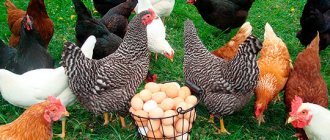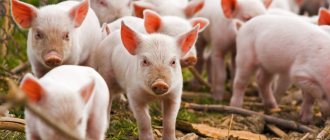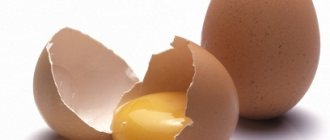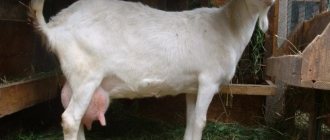A poultry farm is an agricultural business that does not require large financial and time expenditures. A new enterprise quickly pays for itself and begins to generate income if the business plan for raising chickens is correctly drawn up, and all risks and nuances have been taken into account.
The profitability is determined by the fact that poultry meat and eggs are one of the main products of the consumer basket in Russia. A poultry farm selling chicken meat and eggs is a profitable and almost win-win campaign if the farmer adheres to a pre-created strategy.
Features of breeding and maintenance
Egg crosses have a high egg production (up to 250 per year). Chickens begin to lay eggs at the age of five months, so the cross is considered an early maturing breed.
Meat crosses are purchased for breeding meat-egg breeds and broilers. The latter, being an artificially bred species, are most suitable for meat production. They are early ripening and productive: by 8 weeks they reach 2 - 2.5 kg of live weight.
It is not recommended to use meat and egg breeds in business due to low productivity and slow growth of the livestock.
Having decided on the direction of activity, you should decide whether to buy or hatch chickens in an incubator yourself.
Basic steps to create a mini poultry farm
Let's look at the step-by-step opening of a mini-poultry farm using a specific example. The so-called budget option.
- Determine the number of goals.
- Choosing a room and method of keeping chickens. The small area of the farmstead makes one lean towards keeping chickens in cages. Moreover, this is economically justified; further we will analyze why.
- We choose the breed of chickens, having decided on the breed and the direction, you get the opportunity to choose the type of cage.
- We determine the equipment: we look at the presence of devices supplied with the cage that make keeping chickens comfortable for their maintenance and health.
- We choose an incubator for 120 or 500 eggs.
- We find chicken suppliers.
- Planning the food supply
Home hatchery
Even if it is decided to purchase the first generation of birds as chickens, an incubator is subsequently necessary to reduce costs and produce the best individuals.
Incubators are:
- Manual, automatic and mechanical. In the first two, the inversion occurs with the help of a person.
- Ventilated. Ventilation promotes uniform heating of the masonry.
- Rechargeable. The presence of an autonomous power supply will save the masonry during a power outage.
For a private poultry farm, an incubator that can hold up to one hundred eggs is sufficient.
The egg laid must be from a healthy chicken, of standard size and color, with a smooth shell. Each egg in the clutch is checked with an ovoscope for fertilization, central presentation of the yolk, the size of the air chamber (less than 1.5 cm from the blunt end), and the absence of foreign inclusions. The examination is repeated on days 7, 11, 19. During the last ovoscoping, the air chamber should occupy 2 parts out of 3. On average, 70 - 80 chickens emerge from the clutch.
Where to get money to open a farm
To open a poultry farm, a considerable investment in business is required. What to do if a person has a desire to start his own business, but does not have the financial ability to organize it?
In the absence of start-up capital, it is recommended to use one of the well-known and popular methods of attracting resources.
The state is implementing a program to support farmers, offering them up to 2,000,000 rubles for the development of peasant farming. Under the state support program for beginning entrepreneurs, you can count on an amount of 350,000 rubles. Some banking institutions provide preferential loans for the development of agricultural enterprises at 12 annual interest.
Chicken breeds
Equipped premises
The walls of the chicken coop should be made of natural materials that can be whitened with lime. The floor is covered with gastroliths (fine crushed stone, quartz sand) and sawdust. To raise laying hens, resting perches and nests are needed. For meat breeds - cages. A bath with ash or sand is placed in the chicken coop for bathing.
Separate sections are prepared for the chicks, which are regularly disinfected. They should be evenly illuminated and warmed up. The temperature for day-old chickens is 30°C, for grown-up chickens - at least 17°C.
The dimensions of the chicken coop, surrounding areas, as well as equipment for feeding and egg production are calculated from the ratio per bird. The approximate dimensions of the decrees are in the table: calculations for organizing a chicken coop for laying hens with floor keeping.
| 20 chickens | 50 chickens | 200 chickens | 500 chickens | 1000 chickens | |
| Chicken coop, m2 | 4 | 10 | 40 | 100 | 200 |
| Nest, pcs. | 4 | 10 | 40 | 100 | 200 |
| Nests, m2 | 6 | 15 | 60 | 150 | 300 |
| Perch, m2 | 4 | 10 | 40 | 100 | 200 |
| Corral, m2 | 12 | 30 | 120 | 300 | 600 |
| Feeder, m2 | 2,4 | 6 | 24 | 60 | 120 |
Question of finance
When building a chicken coop for 1000 laying hens, you need to think about financing.
There are a couple of ways to quickly get the required amount to start:
- Constant government support for farmers gives them a high chance of receiving funds from small business support funds.
- Credit. Banks have special programs aimed at financing agricultural businesses.
In our country, they pay a lot of attention to the development of agricultural enterprises and projects, so there is every chance of getting funding for your poultry breeding business.
Which chickens lay “golden” eggs?
There are many egg-directed crosses. However, it is worth highlighting several highly productive breeds:
- Hisex.
- Loman Brown.
- Pushkinskaya.
- Leghorn.
- Kuchinsky anniversary.
We purchase grown chickens at the age of 12-16 weeks. At this stage of growth, individuals are already clearly recognizable by gender. It takes a little time from purchase to the first eggs, which allows you to reduce maintenance and feeding costs.
Contain at a temperature from - 2 to + 20С. The recommended daylight hours for chickens is 13 hours year-round. In winter, the chicken coop is heated and artificially lit.
Nests are installed at the rate of: one for 5 heads, feeders (15 cm per 1 beak). In order not to disturb the structure of the flock in the chicken coop, they get a rooster, one for every 15 - 20 females.
Laying hens are fed 2 times a day with compound feed (up to 100 grams per beak per day). Premixes, vitamins, calcium, as well as green grass, hay, meat, bone meal and fish meal are added to the main feed. The drinking bowls must always have fresh water in sufficient quantity. A mandatory attribute for breeding is a fenced area for walking, calculated at 6 cm2 per head.
Chicken eggs from domestic poultry farms are superior in taste and availability of nutrients to their factory-made counterparts.
Products are sold at fairs, markets, and retail outlets after veterinary examination.
Construction of a chicken coop
To keep domestic birds, it is not necessary to rebuild a new building; you can use an existing one with good ventilation and lighting.
The main thing is to comply with the requirements for the premises:
- The width and length of the building depends on the number of runs, that is, equal to the number of heads located in the factory. The recommended ceiling height is 2.5–3 meters.
- A profile sheet is used for external roofing; sandwich panels are perfect for internal ceilings and walls.
- If the poultry house requires insulation, it is better to use sawdust or mineral wool for these purposes.
- Ventilation is ensured by properly positioned vents. But it is necessary to ensure that the location of the windows prevents drafts.
- The floor covering depends on the type of bird: if these are broiler breeds, then it is worth providing a warm floor made of a thick layer of sawdust; laying hens feel great on a small covering of straw or hay.
If there is a ready-made premises with the possibility of converting into a mini-poultry farm, then the costs of arrangement will be small.
If the construction of a new building is inevitable, significant investments will be required.
Meat birds
Broilers are considered the most suitable for poultry farming. As mentioned earlier, these crosses were bred from meat breeds by crossing the best individuals. These birds reach a body weight of 2 kg faster than others. Their meat has unsurpassed taste.
Chickens are bought at one day of age and placed in special boxes and cages with a density of 15 - 20 birds per square meter, with a temperature of 30 degrees. Every subsequent day the temperature drops by 1 - 2 degrees, eventually reaching 17.
The bird is fed 6-8 times a day. For intensive growth, a large amount of grains, premixes and stimulating additives are given. 9 - 12 - week old young animals go to slaughter. By this age, a mass of 2 - 2.5 kilograms of net weight is reached.
Of all the broiler crosses, four can be distinguished as more successful in terms of productivity and quality: broiler 61, COBB 500, ROSS-301, ROSS 708.
The nutritional value and taste of broilers is higher than that of other farm birds. There is always consumer demand for carcasses. In many regions, demand for poultry meat significantly exceeds supply. End customers are willing to pay more for it than for similar factory products. Broilers are sold at markets, fairs, and retail outlets.
Market analysis
Global consumption of eggs and meat is increasing; According to the MNIAP Institute, by 2035, egg consumption in the world will increase by another 50%. The average Russian eats 280 chicken eggs per year (17% higher than in the USA, 33% higher than in European countries).
The country produced almost 45 billion eggs in 2022, and production continues to grow, with an increase of several billion more expected by 2024.
Speaking of meat, almost 5 million tons of poultry meat were produced in 2022, which is 46.9% of all meat produced in the Russian Federation during this period.
For the most part, domestic companies operate in the Russian market. This is due to the implementation of the country’s Food Security Doctrine; Meat self-sufficiency in Russia reached 96% back in 2018.
New farms will have to develop in a highly competitive environment. If you occupy your niche, you can earn good money in this business.
How much will you have to spend
When developing a strategy for creating a profitable chicken farm, you need to take into account the costs:
- for economic needs;
- for feed and additives;
- for the purchase of chicks;
- for depreciation;
- to register a business;
- for veterinary examination;
- for equipment.
In addition to costs, it is necessary to calculate all possible risks and losses. Probably the main problem could be the loss of livestock. The reasons may be different: illness, low temperatures, improper care, dampness in the chicken coop, etc.
However, when breeding meat breeds, two-thirds of the brood survive to the age of three months - this is considered the norm. Laying hens have less losses.
Incubator
To reduce the entrepreneur’s expenses, it is recommended to include in his business plan a section on independent reproduction of the herd. Raising laying hens is much cheaper than buying adult birds.
Initially, you will have to invest in purchasing an incubator and additional equipment for the poultry farm. Chicks should be housed separately because proper heating, ventilation, lighting and feeding are essential for healthy birds to grow rapidly. Investments in incubator equipment and premises for chickens are recouped after the sale of eggs obtained in one season.
Profitability of chicken breeding
It is believed that with proper business management, the profitability of a poultry farm that raises chickens for the purpose of selling eggs is 100% or more. On average, one chicken produces about 200 eggs per year. The market price for a dozen is 100 rubles. A poultry farm with 200 heads brings in about 40,000 a year. After sale, the amount equal to 400,000 rubles is obtained.
With the cost of feed and additives: 10 rubles/kg x 0.1 g x 200 chickens x 365 days = 73,000
Purchase of laying chickens: 200 rub./piece x 200 = 40,000 rub.
Costs for depreciation and utilities are 2,000 x 12 = 24,000 rubles per year, we get costs in the amount of 137,000 rubles, excluding labor and taxes, profitability is 65.75%.
Broiler meat production is calculated approximately the same: 500 chickens x 30 rubles. = 15,000.
Feed: 10 rub. X 0.25 kg x 500 pcs x 80 days = 100,000.
Utilities: 8,000, total expense for one brood (3 months of work) = 123,000 rubles.
With the average market price of poultry meat being 250 rubles per kilogram, we get 500 x 2.5 x 250 = 312,500 rubles in profit.
The profitability is 68%, about the same as when selling eggs. However, there is a nuance when selling meat. It is not always profitable to sell carcasses. Different parts of chicken cost different things. For example, wings and breasts have a high price. By selling carcasses in parts, income increases by 10 - 15%.
It should also be remembered that in egg production, manure can be supplied, and in meat production, the entrails, heads and paws of poultry are sold. Combining these two areas, profitability indicators will not increase significantly, but turnover will be significantly higher, which will entail additional labor costs and so on.
Legal nuances
Before moving on to a detailed consideration of the organization of a poultry farm, it is worth studying the legal details.
- It is easier to register a business as a peasant farm - a peasant farm. Here you will have to collect a minimum of documents, and when choosing taxation, it is better to opt for a simplified system.
- When deciding to start a poultry farm for 500–1000 birds, take into account that the site with the building must be located at a distance of more than 300 meters from residential buildings.
- The land with the farm located on it is registered in accordance with the type of permitted use.
Business registration
When working on a small scale, selling products at markets and fairs, tax registration is not required. To prepare documents for selling products in stores, a certificate of an individual entrepreneur is required. By contacting the Federal Tax Service, you should submit an application for tax registration of an individual as an individual entrepreneur. The taxation system is selected individually; it can be imputed income, agricultural tax or patent taxation system.
You should also undergo examination by the veterinary and consumer services to ensure that the goods comply with the declared quality.
Sales
If the number of heads does not exceed one hundred, then there is no point in worrying about sales; the products will be distributed to relatives, friends and neighbors.
For farms with a large herd of 500 or more, it is more profitable to establish constant sales and this issue should be taken care of at the planning stage.
IMPORTANT: Eggs are a food product that cannot be stored for a long time. Therefore, they need to be sold almost immediately.
Sales options:
- Food outlets: cafes, restaurants;
- Grocery stores, markets;
- Independent traveling trade, opening farm food stalls.
For legal and safe marketing, it is necessary to obtain a certificate from a veterinary laboratory about the quality of eggs. Properly executed documents, the availability of certificates and other permits, as well as compliance with tax laws will not allow regulatory authorities to find fault with the entrepreneur.
Technology
A poultry farm can specialize in:
- hatching chickens from eggs in an incubator;
- on raising chickens to adult birds;
- in the production of eggs and meat products.
A farmer can specialize in one type of activity or in all at the same time. For successful production, products must be brought to market regularly. To do this, it is necessary to properly organize the work process and purchase poultry of a highly productive breed for it.
Laying hens are kept in windowless poultry houses, since to ensure high egg production rates, constant regulation of daylight hours is necessary. Culling and mortality necessitate the need to replenish the herd. Therefore, the farmer must take into account the statistics and plan to regularly purchase adults or small batches of hatching eggs to complete the flock.
To ensure the productivity of chickens, the temperature of the poultry house should not go beyond 16-18 degrees Celsius, and the humidity should be at 60-70 percent. Good lighting and cleanliness of the poultry house have an important influence on the egg production of chickens. The level of dust in the room affects the general condition of the bird. In summer, it is recommended to install powerful fans to ensure air flow. If the room is not cleared of droppings in a timely manner, as a result of its decomposition, gases are released, the inhalation of which has a negative effect on the bird’s appetite.
Let's sum it up
Running a chicken breeding business is profitable. More often this pays off if you take a large number of livestock, but in the initial stages the main thing will not be income, but setting the right actions to increase sales. The main thing is to find sales points, otherwise the products will remain in your hands and simply disappear. It is also important to correctly approach the organization of the “housing” issue for chickens - to build or equip an existing poultry house. Otherwise, chickens are unpretentious animals, and therefore even inexperienced farmers will not have any problems with their breeding. Organize your business correctly and you can make a decent profit. Good luck!











